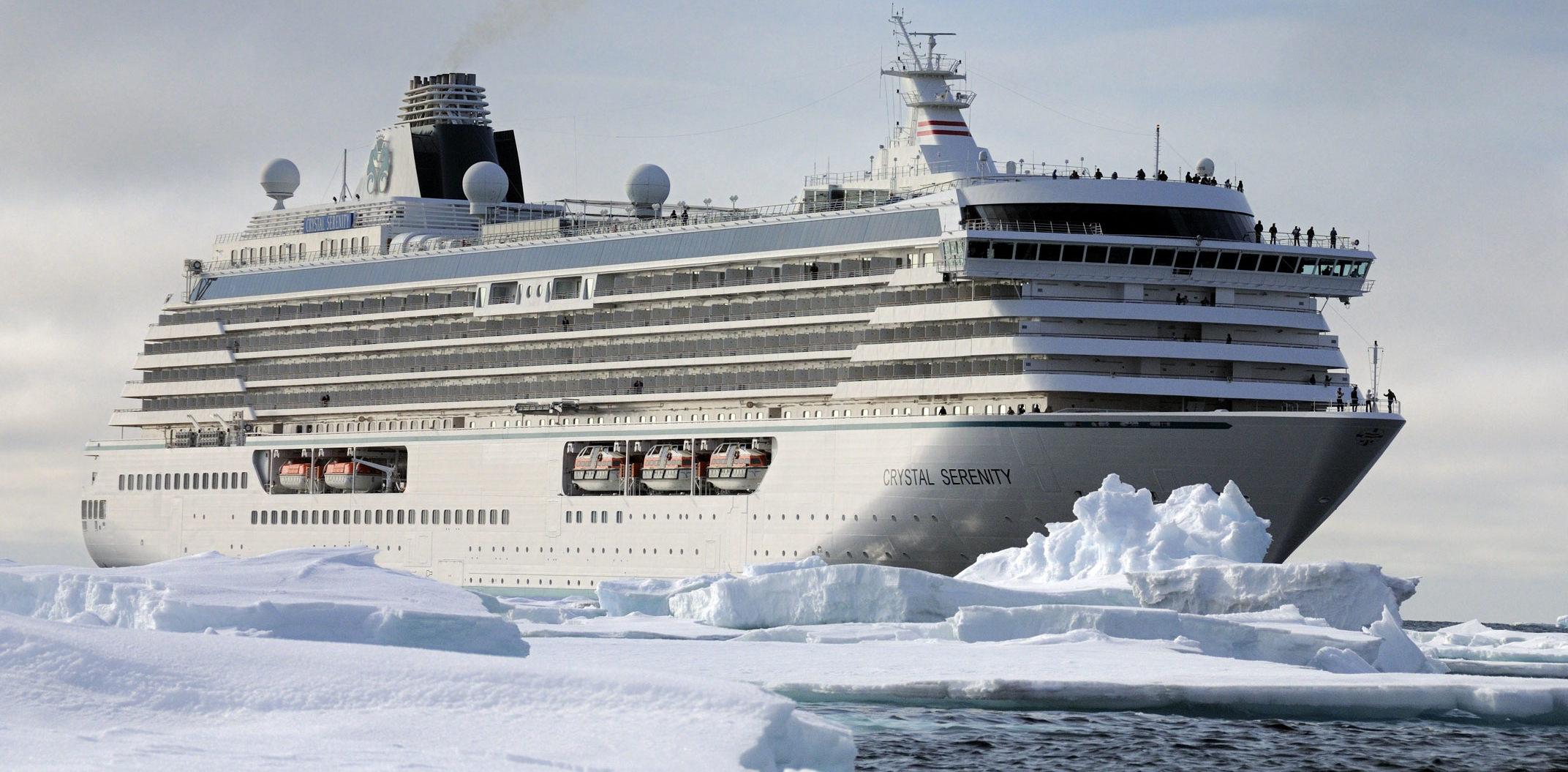Tourism tours through the thinning Arctic ice are growing in popularity.
This summer Crystal Serenity will sail once again, with about 1700 passengers and crew, along the northern coast of Alaska and Canada, West to East. It will spend about 15 days in an area known as the North West Passage, with the tourists able to make stop offs at some of Canada’s remotest settlements.
As with its inaugural trip last year, the UK research vessel Ernest Shackleton has been chartered as a support vessel.

Crystal Serenity is not the only vessel likely to take passengers in and out of the island waterways that form the North West passage. A tall sailing ship is also set to venture into the waters, though will not be making a full transit.
The three masted school sailing vessel Oliver Hazard Perry will make a journey taking school children through the Arctic waterways in a month long trek from Pond Inlet westbound to Cambridge Bay. The premise of the voyage is to research and reveal the world of an ice-free Arctic.
The sailing vessel is however steel hulled and has two engines on board so will not be relying on the weather to make her way. She will have 18 students on board along with ships crew and other staff.
There is less summer ice in the northern sea routes than at any other time in history, making these kinds of journeys now possible, whereas only decades ago they would have been treacherous and almost certain to fail.

And with summer sea ice levels continuing to fall, the likelihood is that Arctic tourism will only pick up. Recently the US-based National Snow and Ice Data Center reported that Arctic sea ice maximum at record low for third straight year
NSIDC is part of the Cooperative Institute for Research in Environmental Sciences at the University of Colorado Boulder. Its scientists provide Arctic Sea Ice News & Analysis content, with partial support from NASA.
On March 7th this year the Arctic Sea ice covered 14.42m sq km of the polar region. March is the end of the winter period and when the ice extent is at its furthest south. This, said NIDC, represents the smallest area that the winter ice levels have reached in the 38-year history of satellite records. The previous low was 14.517m sq km in 2015 and 14.52m sq km last year
NSIDC scientists said a very warm autumn and winter contributed to the record low maximum, with air temperatures 2.5 degrees celsius above average over the Arctic Ocean. The overall warmth was punctuated by a series of extreme winter heat waves over the Arctic Ocean, continuing the pattern also seen in the winter of 2015.
From mid-March the ice levels will recede as the summer months draw in, reaching a minimum sometime in September before the cold winter air draws in and the waters begin to freeze again.
Data from the European Space Agency’s CryoSat-2 satellite has also shown that this winter’s ice cover was slightly thinner compared to the past four years.
“Thin ice and beset by warm weather—not a good way to begin the melt season,” said lead scientist Ted Scambos in an NSIDC statement.
Such thin ice going into the melt season sets us up for the possibility of record low sea ice conditions this September according to the centre, and this will bode well for the tourists hoping for a risk free journey through the Arctic
Not so hidden message
Those tourists and students heading into the Arctic this year should also heed the not so hidden message that scientists say thinning Arctic ice means. The Arctic has long been the poster child for climate change, along with the adage emerging that what happens in the Arctic does not stay in the arctic.
“While the Arctic maximum is not as important as the seasonal minimum, the long-term decline is a clear indicator of climate change,” said scientist Walt Meier, NASA Goddard Space Flight Center Cryospheric Sciences Laboratory and an affiliate scientist at NSIDC.
Melting ice will also impact sea levels, water salinity and a host of other environmental issues.
And this is why there are continual, often extravagant ideas, to help save the polar ice caps from disappearing all together. The latest one is to build floating, wind powered, pumps that can pump sea water along pipelines and then onto the ice cap, building up ice levels.
Steve Desch, professor of astrophysics at the School of Earth & Space Exploration at Arizona State University, wants to have 10 million of these pumps built to help save the Arctic ice.
Fathom-news.com
editor@fathom-mi.com































